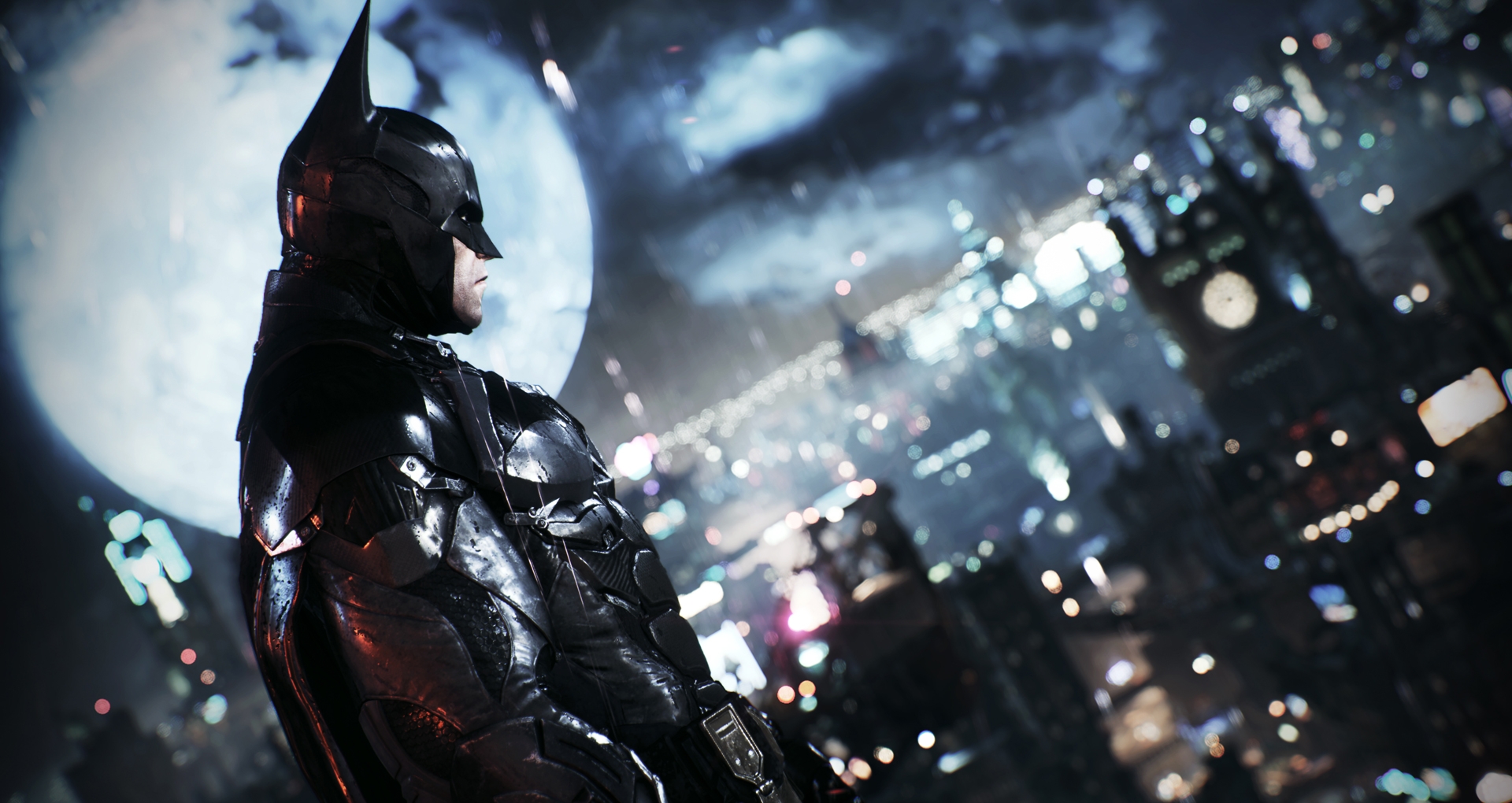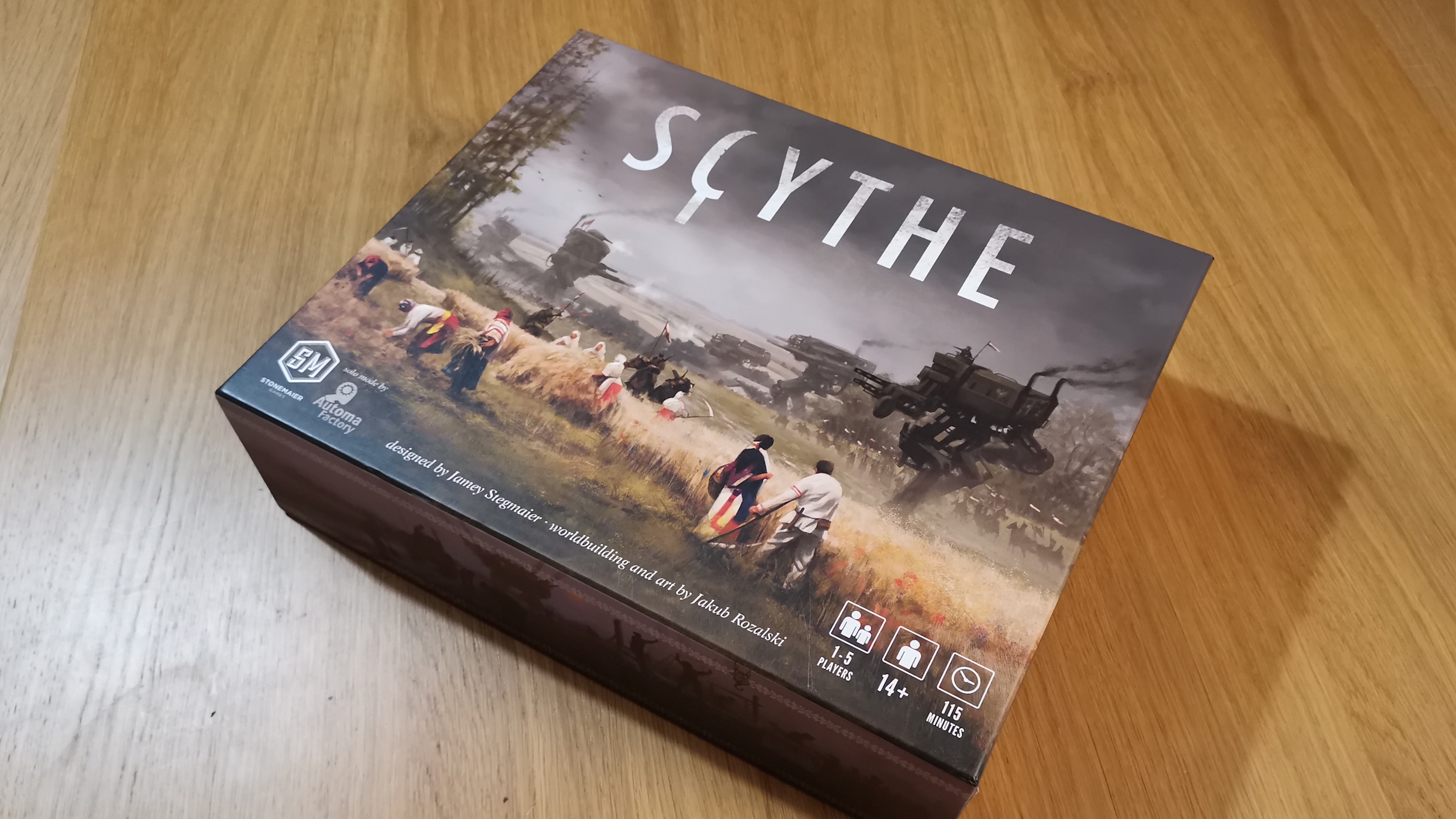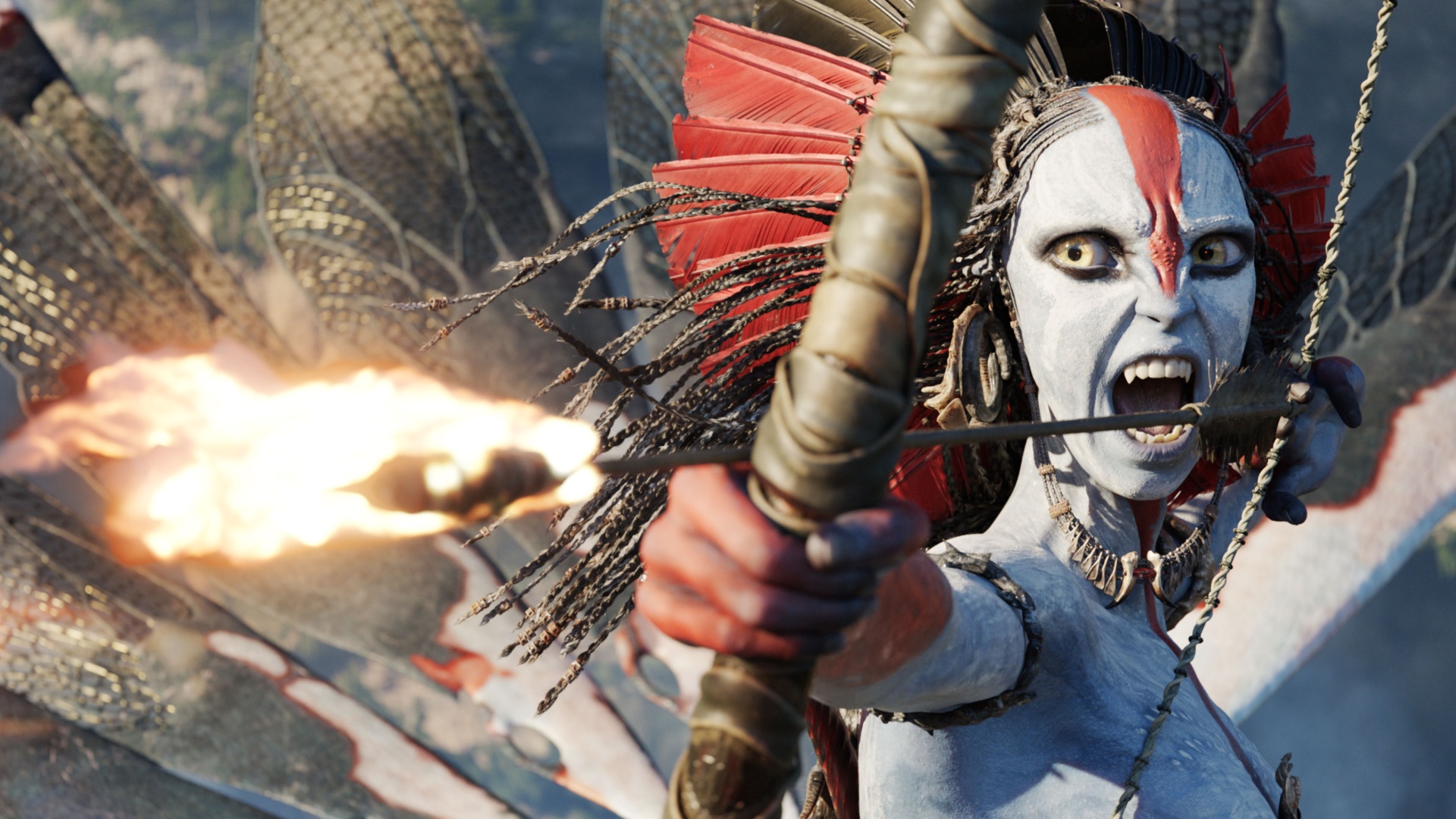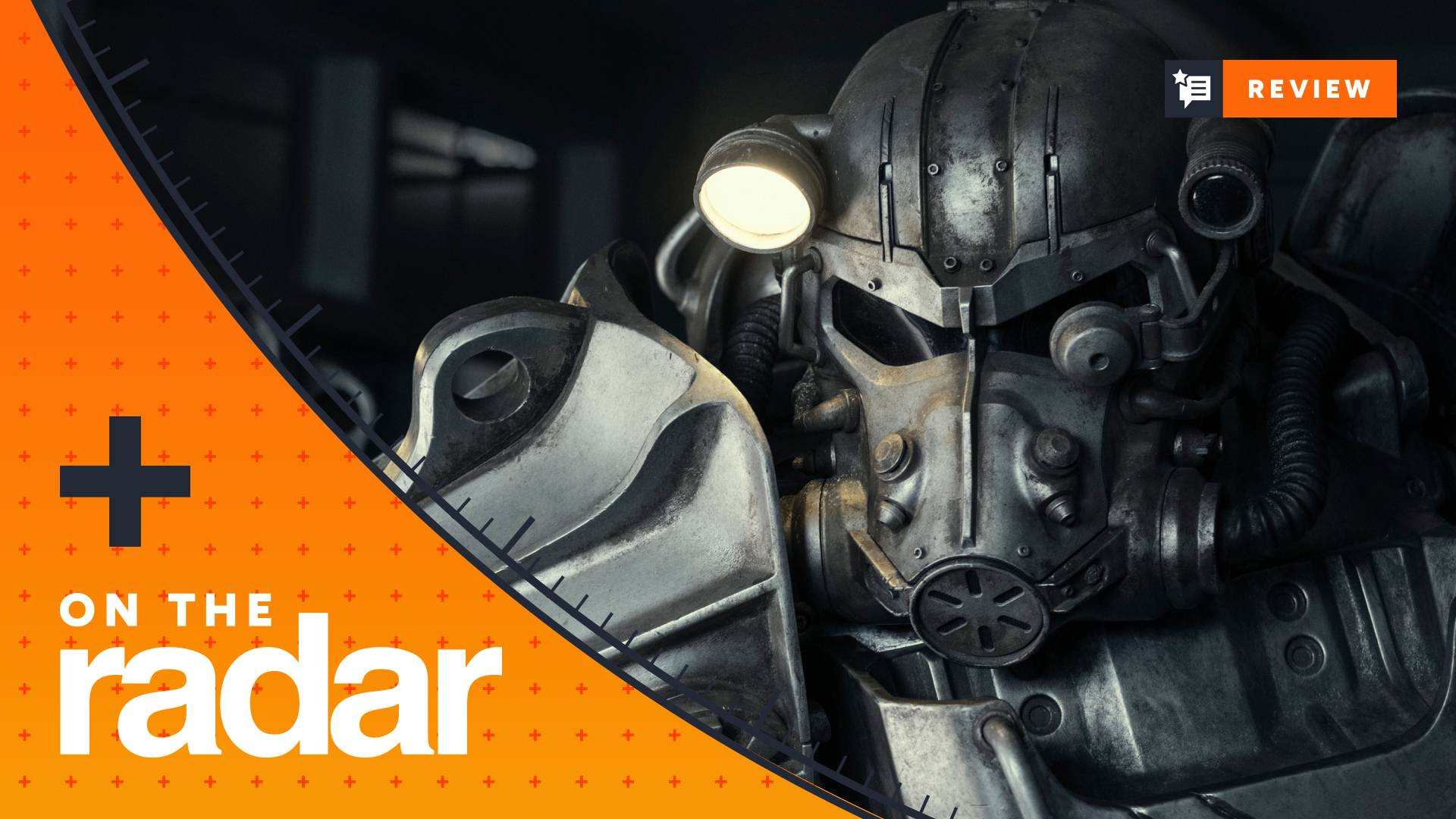GamesRadar+ Verdict
An ambitious and successful end to Rocksteady’s trilogy, with a standard-setting open world you must experience. A superior main story and less Batmobile combat would’ve made a huge difference.
Pros
- +
One of the best open worlds ever created
- +
Freeflow combat and predator sections are better than ever
- +
Tag team attacks are fun while they last
- +
The sidequests involving Batmans villains are mostly excellent
Cons
- -
Batmobile combat is a big letdown
- -
Main story is the series weakest
Why you can trust GamesRadar+
Rocksteady has finally made a game where I can do everything that Batman does in the opening of the ‘90s Animated Series. I can turn up in a Batmobile, glide out, beat up some thugs and then pose dramatically as I gaze across Gotham City’s skyline. Arkham Knight is full of moments like this - scenes that recall the best bits of the Dark Knight from across the character’s history, brought to life in an extraordinary open world. This is intended to be the complete Caped Crusader experience, the studio’s triumphant farewell, but the attempt to weave the Batmobile into the series’ existing game design creates its own problems.
Rocksteady’s third game remaps Gotham City as a much larger playground than you saw in Arkham City, now under siege from the Scarecrow and a somewhat annoying, whining mystery enemy known as the Arkham Knight. In size, Gotham feels like three Arkham Cities put together - a trifecta of distinctive (if not sprawling) environments all built with the Batmobile’s capabilities in mind. Gotham often looks like Los Angeles in Blade Runner: neon lights, relentless rain, smoky streets. You can scale Wayne Tower and jump off again with no restrictions. This is a breathtaking, grim world that feels handcrafted for the ultimate Batman power fantasy, and is absolutely the reason to buy Arkham Knight.
Driving the Batmobile around this environment feels like a valuable addition to the series, even if the handling is a little slippery. This is a beast of a machine that tears through a surprisingly large number of concrete walls and pillars, rocket boosts between rooftops like the Tumbler from the Dark Knight movies, and slingshots Batman into the air for a glide boost or pre-emptive attack. It’s a lot of fun to just drive around Gotham City. Unfortunately, Rocksteady overcomplicates it beyond that purpose and does a lot more harm than good.
The vehicle combat in Arkham Knight is a misfire. Essentially, it’s Batman vs robot tanks. The Batmobile assumes a battle mode position where it can move precisely in a 360 degree space, using the main cannon to take out these unmanned drones. Rocksteady treats this as a third pillar to the existing predator and freeflow combat sections of the series, affording it a dispiriting amount of time in the main story, but it seriously lacks that feeling of progression beyond a couple of special moves and weapon improvements.
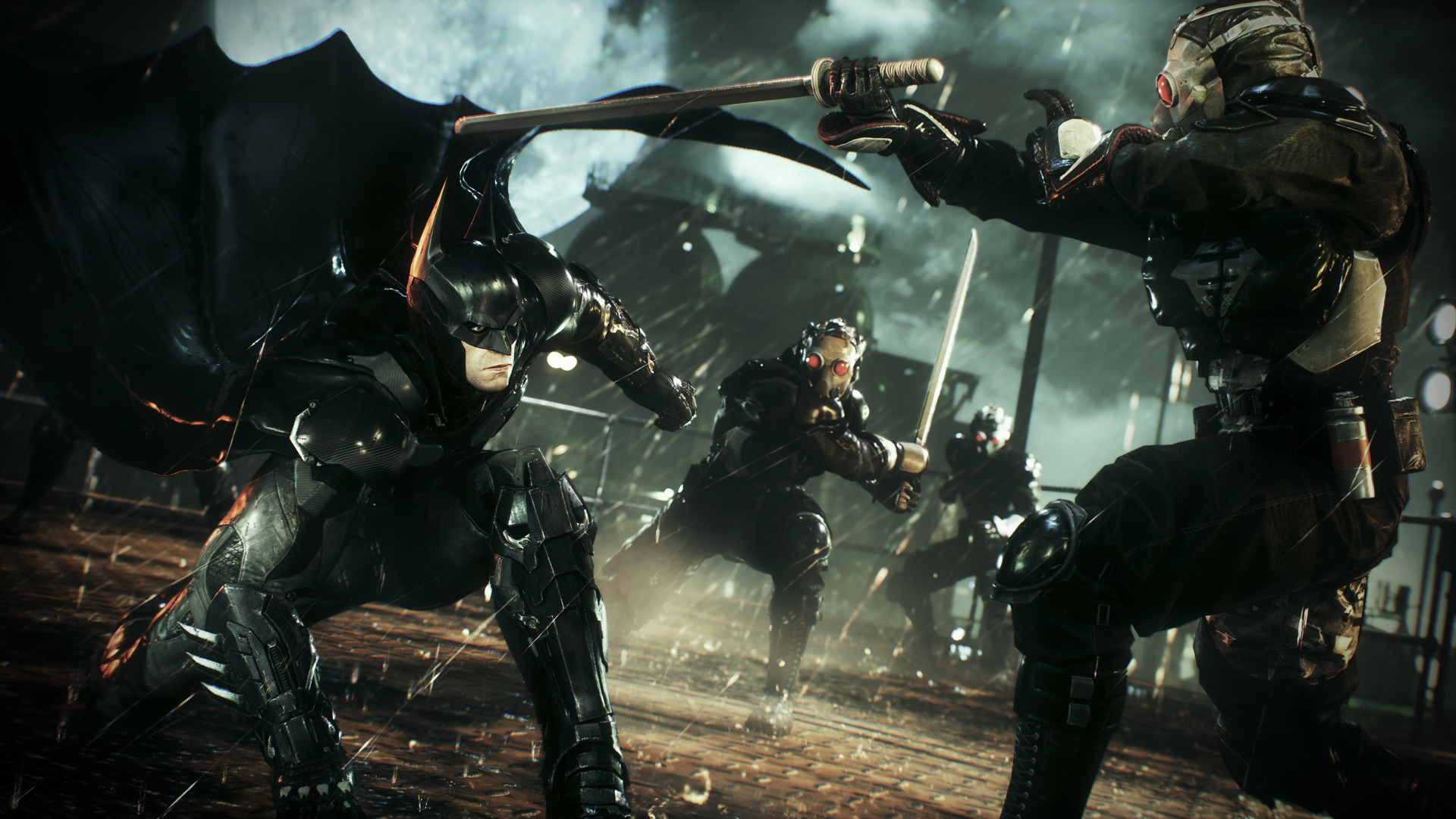
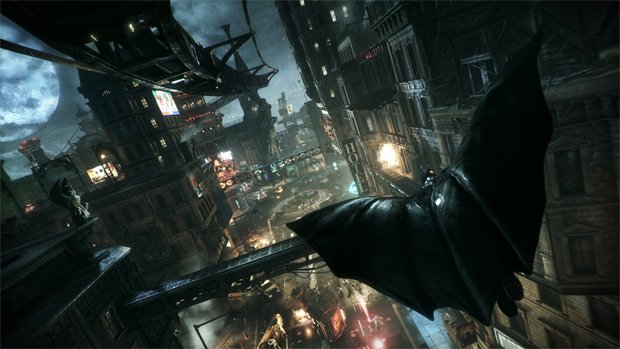
What’s impressive about Arkham Knight’s three districts in Gotham (Bleake Island, Founders’ Island and Miagani Island) is how different they all are in style. Bleake isn’t dissimilar to Arkham City with mostly shorter buildings, rough areas and abandoned docks. Founders’ Island is incredible - a clean skyscraper paradise built on what look like old Gotham slums, while Miagani is like the old Gotham metropolis, with Wayne Tower as its centrepiece. Collectively they make it feel much more like a real place than the truncated Arkham City did.
The first encounter with these unmanned drones is roughly the same as the last. It’s as simple as avoiding the drones’ visible line of fire and picking them off. These are not dreadful sequences, they just compare poorly to everything else that the Arkham series excels at. But there’s another side to the vehicle combat that’s far more offensive: car stealth.
Later in the story, larger tanks called cobras enter the fray, which can’t be destroyed head-on like the others, and punish you with a near-instant death if you’re caught by them. Cobras can only be taken out by sneaking up on them, usually from behind a building (in a car, which is daft) and carefully lining up a shot on their rear weak point. I really dislike these sequences, and I feel they require the luck of not being trapped in a corner by their line of fire more than actual skill; the cobras can so thoroughly get in the bin. One especially busy cobra assault later in the story is so poorly designed that it dragged down my overall impression of Arkham Knight’s final act, which is a shame.
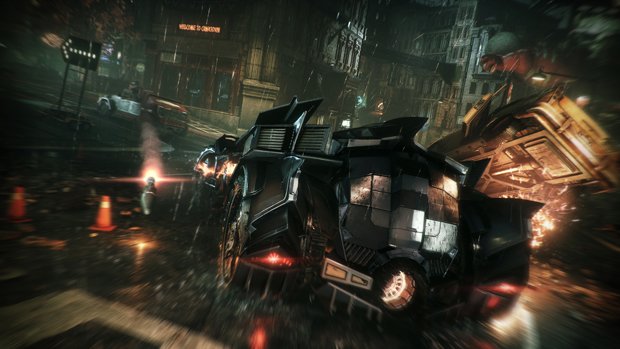
The Batmobile is a mixed affair, then, but Arkham’s straightforward stealth and crunchy melee combat are still world-class. There’s no reinvention here, just tweaks to give players new strategies and things to learn. One of my favourite new predator tools is a device that imitates the voice of Batman’s villains and can order guards to investigate specific objects or places, breaking them from the pack and allowing the player to land an easy stealth knockout. In freeflow, contextual attacks mean the Dark Knight can drag a guy’s head into an electrical box (which somehow doesn’t violate his rule of not killing people), or bring a light fitting down on top of some poor bastard. He can also throw batarangs while gliding, and with the Batmobile in close proximity, use its blank bullets to spam an enemy out of the air as a winning combo finisher.
Weekly digests, tales from the communities you love, and more
Another new option is the tag team attack, which sees Batman pairing up with a number of his closest allies to perform deadly finishing moves, switching between two playable characters. My favourite sequence in the game sees Batman and Robin teaming up in a context I won’t describe, to avoid any spoilers. When the dynamic duo hear goons talking on the other side of some double doors, they both kick through simultaneously and properly beat the toss out of them with these lovely combo finishers. There’s even a predator section where Batman and Robin silently take out guards as a pair. I just wish there was more of it - the main story has roughly just an hour of Batman and Robin teaming up, but Rocksteady will throw reams of robot tanks at you at any opportunity.
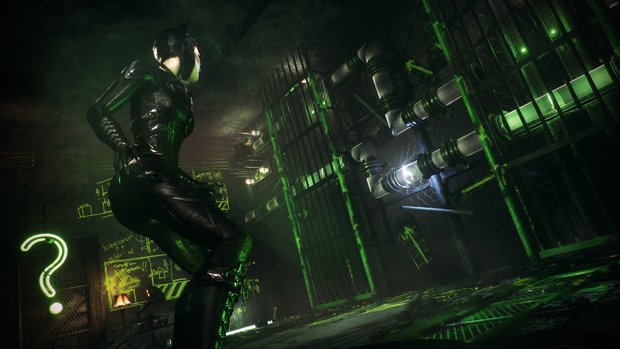
The main story loses out because of those sorts of decisions, and it’s not helped by the generally wonky storytelling, sometimes hammy dialogue and unconvincing duo of primary villains. Once you’ve beaten the 12-14 hour campaign, though, you can basically ignore the robot tanks and focus on Arkham Knight’s strengths - like Arkham City, the sidequests in the open world are almost universally fantastic, even if they’re just repackaging existing parts of the game with villain-themed stories linking them together. The citywide takeover by Batman’s rogue’s gallery gives Rocksteady an ideal excuse to check them all off.
There’s a decent sense of variety between them. A trio of bank robberies by Two-Face turn into thrilling and tricky predator sections on a time limit, while a subplot involving the Penguin’s weapons supplies brings out a few genuinely great character moments between Bruce and his former Robin, Nightwing. The Riddler challenges bulk out the city with plenty to do, and he’s a bit more involved as a story character this time around, even if his underground Batmobile races are beyond silly.
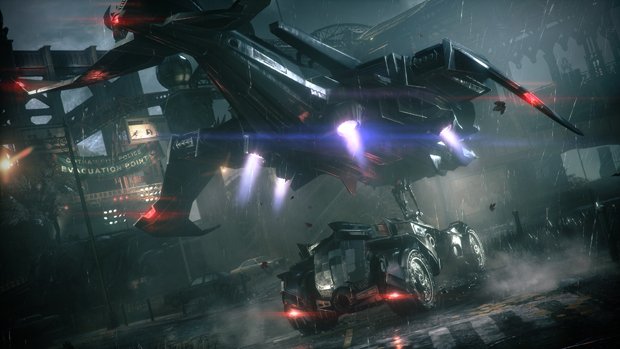
There are also a few excellent sidequests that offer narrative surprises on the level of Hush or Mad Hatter from Arkham City. They’re not all winners: rubbish arson-happy Arkham Origins villain Firefly returns via three terrible chase sequences around the city that made me swear a lot, and others are just repetitive fetch quests with little flavour, but there’s plenty of game to keep you exploring this gorgeous city.
Once I put a bit of distance between the campaign’s problems and the more positive experience of patrolling Gotham and mopping up these hours of sidequests, I really started to love Arkham Knight. I can see players just dipping in and out of this world forever, jumping in the Batmobile to chase down some criminals, visiting the villains in the lock-up at GCPD, gliding from an airship onto the LexCorp building; just being Batman in this worthy depiction of his universe.
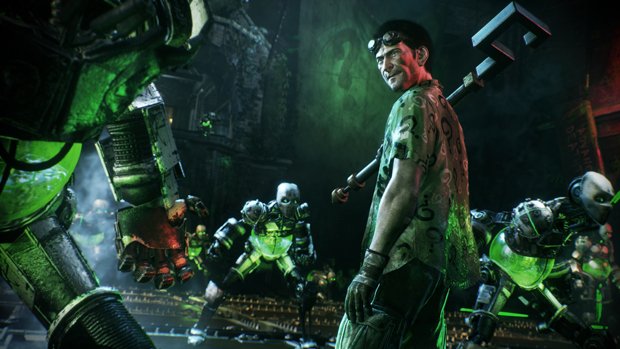
On that level, Arkham Knight offers an unparalleled interactive superhero experience that’s as rich as any fan could hope for - this is one of the best open worlds I have ever had the pleasure of exploring, and one of the nicest-looking games on PS4. Without overcomplicating the Batmobile’s purpose in Arkham Knight and a slightly less disappointing campaign, this would’ve been close to a perfect sign-off for Rocksteady’s Caped Crusader.
This game was reviewed on PS4.
More info
| Genre | Action |
| Description | The next-gen close to Rocksteady's Arkham trilogy. |
| Platform | "Xbox One","PS4","PC" |
| US censor rating | "Mature","Mature","Mature" |
| UK censor rating | "","","" |
| Release date | 1 January 1970 (US), 1 January 1970 (UK) |
Samuel is now a PR Manager at Frontier Development, but was once a staffer at Future PLC. He was last the Entertainment Editor at TechRadar, but before that he was the UK Editor at PC Gamer. He has also written for GamesRadar in his time. He is also the co-host of the Backpage podcast.
